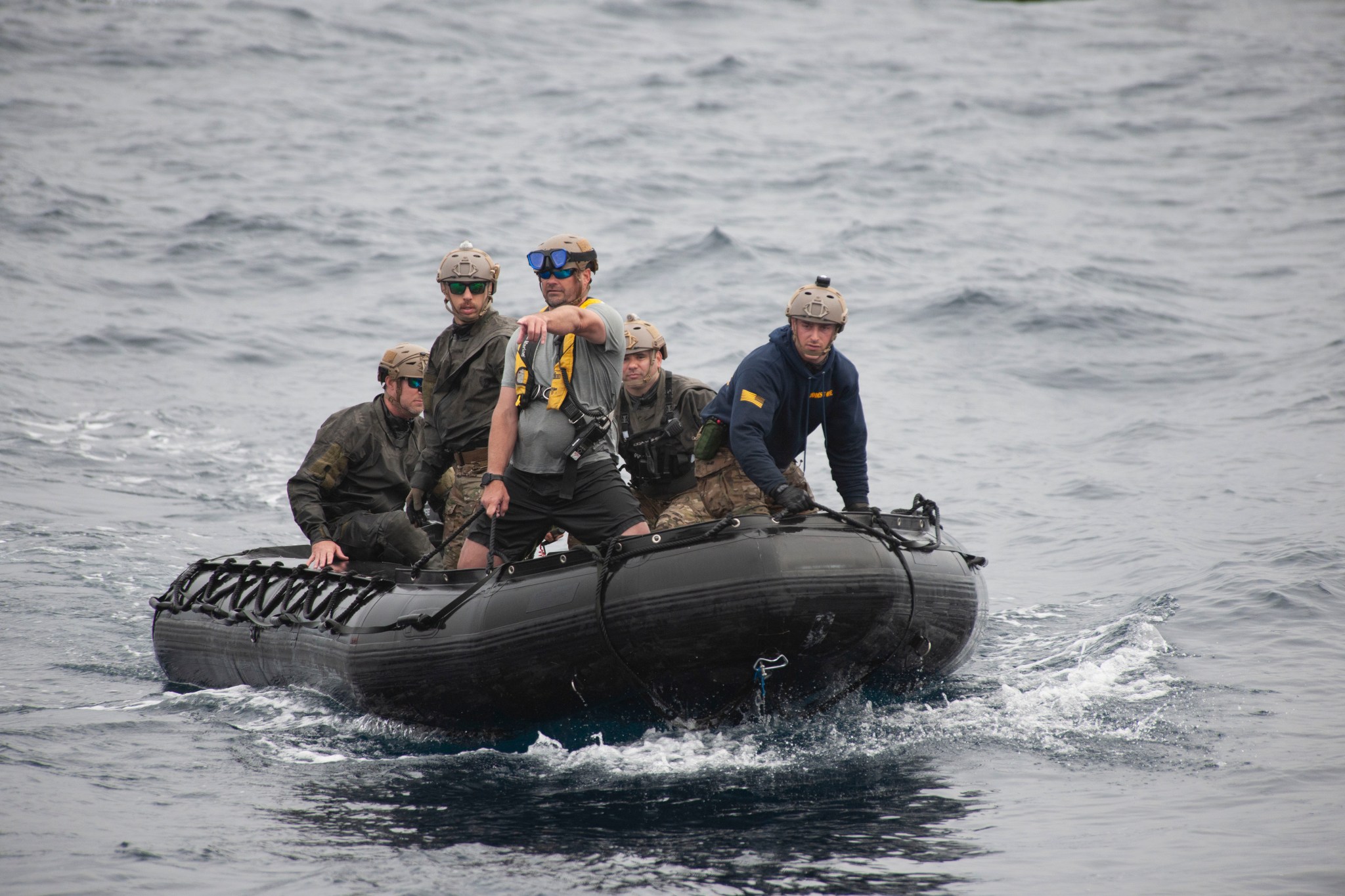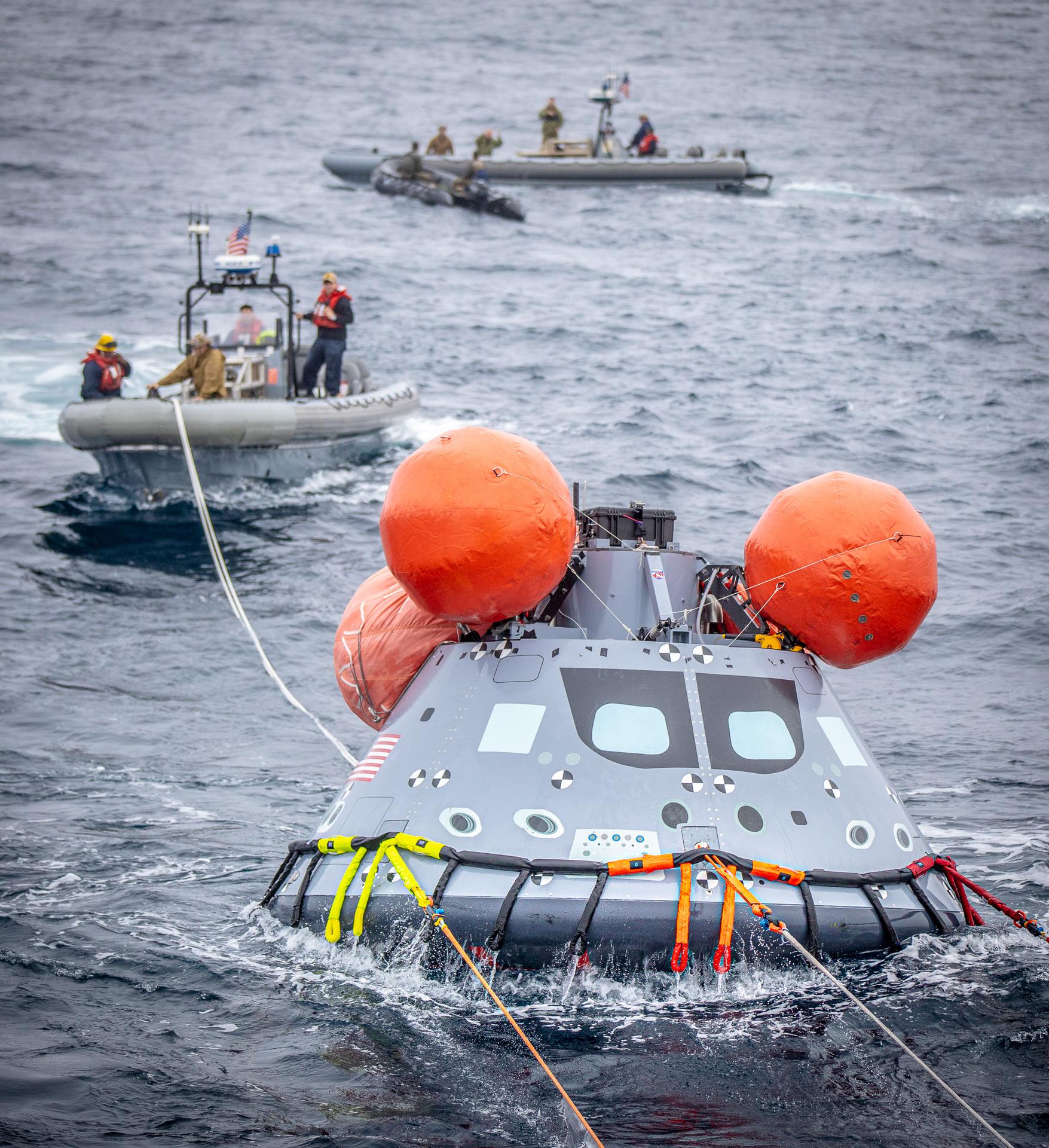
By Madison Tuttle
NASA’s Kennedy Space Center
When astronauts splash down in the ocean after completing Artemis missions to the Moon aboard the Orion spacecraft, an elite team of U.S. Navy divers along with NASA personnel, including Tim Goddard of NASA’s Johnson Space Center, will be the first people to welcome the astronauts back to Earth.
“One of the rewarding parts of the job is being one of the first folks out to assist and get to see the astronauts when they return,” Goddard said. “These men and women will have traveled farther than anyone has before; it will be my honor to welcome them back to planet Earth.”

Since 2008, Goddard has been part of NASA’s Recovery Team and now serves as the open water lead. The retired Navy diver is NASA’s technical expert and lead design engineer for all open water operations.
Although the Artemis I mission will be an uncrewed voyage around the Moon, the recovery dive team will still be the first people to race out to the capsule after a successful splashdown. The recovery operation will serve as added training and evaluation ahead of the first crewed mission, Artemis II.
After arriving in a series of small boats, the dive team will begin circling the capsule to look for any hazardous chemicals it may be emitting. Divers will also look for any potential hot spots on the capsule caused by its rapid descent through Earth’s atmosphere, as Orion will slow from around 25,000 mph at re-entry to about 20 mph after the parachutes deploy for a safe ocean landing.
Once the divers know Orion is safe to approach, they’ll bring their boats up against the bobbing capsule, and members of the 16- to 20-person team will jump into the water and begin attaching hardware to steady the capsule. Once Orion is stabilized, the team installs hardware and rope assemblies that will help pull Orion into the well deck of the Navy’s recovery ship.
“The first boat to approach will install what we call a sea anchor – it’s an underwater parachute that stabilizes the capsule and gives the divers a better platform to work from,” said Goddard. “Once that’s done, we remove the sea anchor and let the crew on the ship know that we’re ready for recovery.”
One of the small boats will then begin towing the capsule toward the ship. The dive team then connects to the capsule a series of ropes from inside the ship’s well deck, ensuring Orion can be pulled safely inside the ship.
To prepare for Orion’s recovery, the divers have undergone training both at Johnson Neutral Buoyancy Lab (NBL) and during a series of week-long tests with NASA and the Department of Defense (DoD) in the Pacific Ocean.
During the NBL training activities, NASA and the Navy work through the procedures of recovering Orion inside a 6.2-million-gallon pool, practicing in varying wave and light conditions.
“Before they even show up for testing at sea, the dive team has already had at least two weeks of training,” Goddard explained.
During the final recovery test at sea, which was conducted Nov. 2-8 in the Pacific Ocean aboard the USS John P. Murtha, NASA and the DoD completed a full mission profile for Artemis I to put the recovery team, the hardware, and procedures to the test. The dive team began early in the morning to suit up and deploy five boats into the water via crane and out of the back, or well deck, of the ship. After a full-scale mockup of the Orion capsule was placed in the ocean, the dive team began working through procedures to safely and quickly recover the capsule.
In addition to recovering Orion for Artemis I, the dive team also will work to recover the parachutes and forward bay cover of the spacecraft to bring them back to shore. Once returned, NASA scientists and engineers will examine that hardware to understand how it performed during re-entry.
Artemis I will launch from Launch Complex 39B at Kennedy Space Center in Florida as an uncrewed flight test of the Space Launch System rocket and Orion spacecraft. It will travel around the Moon and back to Earth to pave the way for crewed flights to the Moon and increasingly complex missions.























